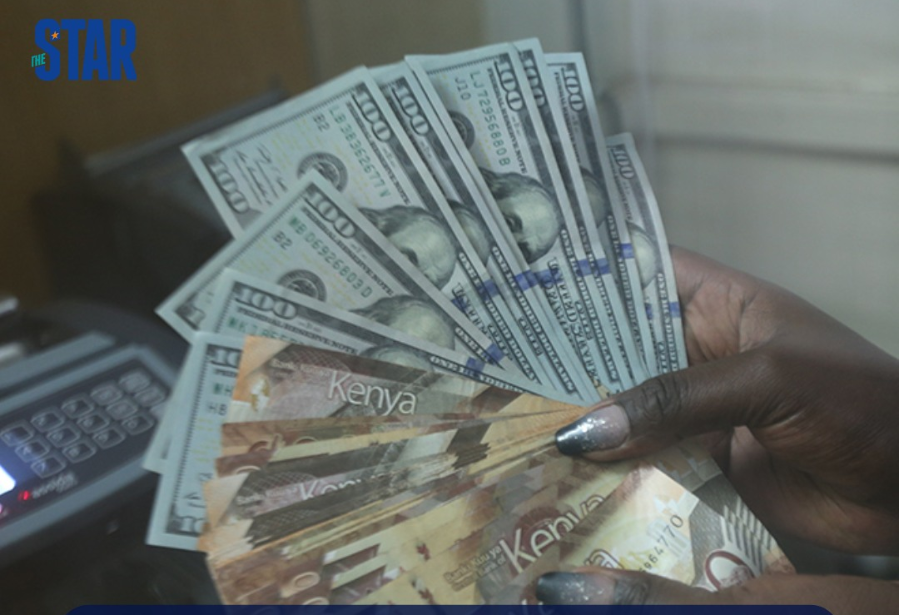 US and Kenyan shilling notes/ FILE
US and Kenyan shilling notes/ FILE
REMITTANCES to Kenya slightly increased 0.2 per cent in September to $419.6 million (Sh54.3 billion), Central Bank of Kenya data shows, as Kenyans abroad continued to support families and invest back home.
The 12-months cumulative inflows to September 2025 increased by 7.6 per cent to 5.080 million (Sh657.9 billion), compared to $4.723 million (Sh611.9 billion) in a similar period in 2024.
Inflows are projected to hit a record $5.24 billion (Sh678.7 billion) this year, according to CBK, before growing to $5.56 billion (Sh720.1 billion) in 2026.
The US remains the leading source of remittances to Kenya, with most of the money sent back home going to support the education and medical needs of friends and families back home, according to WorldRemit.
The inflows have also been instrumental in supporting the Kenyan shilling which has remained stable, supported by diversified foreign exchange inflows from diaspora remittances, horticulture and tea exports and offshore banks, as well as confidence in the economy, particularly with the recent upgrade of Kenya’s credit rating by S&P Global Ratings.
CBK’s latest survey shows most respondents (88 per cent of banks and 87 per cent of non-bank respondents) expect the exchange rate to remain stable or strengthened.
This will be supported by robust foreign exchange inflows from tourism, diaspora remittances and exports, matched demand and supply of forex in the market and adequate foreign exchange reserves.
“Some respondents expect moderate pressure mainly from increased imports,” governor Kamau Thugge said, “ They (remittances) remain a key source of foreign exchange earnings and continue to support the balance of payments.”
The country’s current account deficit is projected at 1.7 per cent of GDP in 2025 and 1.8 per cent of GDP in 2026, mainly reflecting continued growth in goods imports, amid resilient exports growth and diaspora remittances inflows.
The deficit is expected to be more than fully financed by financial account inflows, resulting in an overall balance of payments surplus of $674 million (Sh87.3 billion) in 2025 and $229 million (Sh29.7 billion) in 2026.
“This is expected to result in a foreign exchange reserves build-up, with gross reserves projected at $10,765 million (Sh1.39 trillion) in 2025 and $10,994 million (Sh1.42 trillion) in 2026, from $10,091 million (Sh1.31 trillion) in 2024.
The foreign exchange had surged to $12,072 million (Sh1.56 trillion) as of last week (5.3 months of import cover), as of October 15., which meets the CBK’s statutory requirement to endeavour to maintain at least four months of import cover.
This has been buoyed by the stable remittances. Kenya's remittance inflows reached a record Sh666.7 billion in 2024, surpassing the previous year's record of Sh586.0 billion.
This marks a significant increase, with remittances now being the country's largest source of foreign exchange.
In August, CBK in collaboration with the Kenya National Bureau of Statistics (KNBS) and the Financial Sector Deepening Kenya (FSD Kenya), announced the first ever Remittances Household Survey (RHS).
The 2025 RHS aims to collect information on
international remittances flows.
Remittances are support received by households in Kenya from households outside Kenya. The support is received in form of money (cash) and or in-kind (non-cash), without requiring the recipient to provide a corresponding item of economic value (good or service).
Remittances also include support sent by households in Kenya to non-resident households outside Kenya.
CBK collects data on international remittances received through authorised international remittance service providers such as commercial banks, money transfer operators and mobile network operators.
“With remittance transactions growing in importance, it is imperative that accurate and comprehensive data is collected on remittance flows,” CBK said.
“The 2025 RHS therefore represents a major step towards improved data on remittances and will collect valuable information on the amount, uses, cost and the challenges that will inform policy formulation including those related to supporting the remittance flows.”
In addition, the survey will collect information on remittances received through informal channels and in-kind (non-cash) remittances.
The survey was conducted between July and September 2025, with field personnel visiting selected households that have received or sent remittances.












